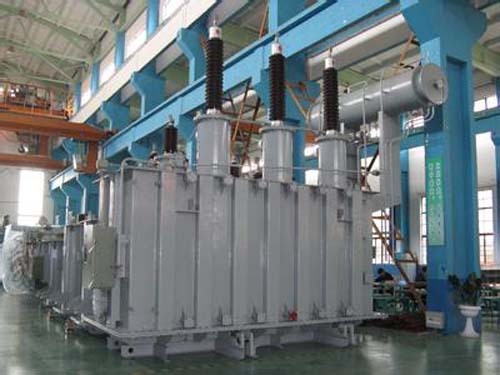First, the purpose and significance of the load test Cross Guide Coupler,Crossguide Coupler,Waveguide Coaxial Coupler,Waveguide Cross Coupler Chengdu Zysen Technology Co., Ltd. , https://www.zysenmw.com
The load test of the transformer is to short-circuit the wire ends of the windings on one side of the transformer and to supply the rated current of the rated frequency on the other side. At this time, the rated current flows through the coils on both sides, thereby generating a leakage magnetic flux. In addition to the resistance loss caused by the rated current in the winding, the loss caused by the leakage flux in the winding and in the structure is called the nearby loss. Together they are called the load loss, which is the loss measured during the load test. The rated voltage applied to the short-circuit winding during the load test is the impedance voltage, which is generally expressed as a percentage of the rated voltage.
Regardless of the size of the transformer, the load loss accounts for most of the total loss. By analyzing the load loss, the structural and manufacturing defects of the transformer can be checked. Impedance voltage is also one of the important conditions for parallel operation of transformers.
Second, the relevant standards and requirements of the load test
1. Impedance voltage and load loss should meet the requirements of GB1094.1.
2. The load test shall be performed on the main tap.
3. The two-winding transformer supplies the rated current from one side of the sample, and the other side is short-circuited and measured only once. The three-winding transformer should be conducted between pairs of windings, and the other windings open.
Second, the load test method
Transformer load test is usually to make one side of the larger rated current winding short circuit, the other side of the winding is rated tap position, the rated current rated frequency is applied, at this time, the measured loss is the load loss, the measured voltage The percentage of rated voltage is the impedance voltage (standard value). Both power meter and three-power meter measurements for single-phase transformers and three-phase transformers are basically the same as the wiring diagram for no-load tests.
Four, three-phase transformer single-phase load test
The single-phase load test of the three-phase transformer is based on the comparison and analysis of the two-phase load loss, and the distribution of the load loss in each phase is observed to find the defects of the winding in the manufacture. It is an effective method for finding faults.
When the power supply windings are star-connected, the power supply shall be distributed from the higher voltage side AB, BC, CA, and the rated current shall be applied. The loss of the AB phase shall be PAB, the voltage shall be UAB, and the loss of the BC phase shall be PBC. The voltage is UBC; the load loss of the CA phase is PCA and the voltage is UCA.
When the power supply windings are delta-connected, in addition to the dual-phase application of the power supply, one phase should be short-circuited in sequence (A-phase short-circuit, BC-phase power supply; B-phase short-circuit, AC power supply; C-phase short circuit, AB-phase power supply)